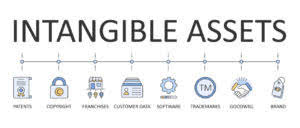The purpose of a trial balance

Debit balances are merely listed on the debit of the trial balance, with credit balances on the credit. In a nutshell, a trial balance is an informal accounting statement, prepared with the help of ledger account balances. Companies can use a trial balance to keep track https://www.bookstime.com/articles/income-summary-account of their financial position, and so they may prepare several different types of trial balance throughout the financial year. A trial balance may contain all the major accounting items, including assets, liabilities, equity, revenues, expenses, gains, and losses.
- At the end of an accounting period, the accounts of asset, expense, or loss should each have a debit balance, and the accounts of liability, equity, revenue, or gain should each have a credit balance.
- The unadjusted trial balance in this section includes accounts before they have been adjusted.
- In the accounting cycle, preparing the trial balance comes right after posting journal entries to the ledger’s accounts, and just before preparing the financial statements.
- This means the trial balance is not needed by entities that have computerized systems.
- It may have occurred that certain transactions were not recorded at all, and hence both the credit and debit sides were not affected.
- The Trial Balance Report is your compass – it shows you where you are, and if your books are balanced, it can tell you if you’re sailing smoothly or if there’s a storm brewing.
- A trial balance is an accounting report that states the ending balance in each general ledger account.
It does not detect errors of original entry, compensating errors, errors of reversal, and errors of principle. Therefore, it’s important to monitor all accounting procedures for accuracy. Note that for this step, we are considering our trial balance to be unadjusted. The unadjusted trial balance in this section includes accounts before they have been adjusted. As you see in step 6 of the accounting cycle, we create another trial balance that is adjusted (see The Adjustment Process).
Preparation and Process
Accurately prepared, the report indicates that the sum of debits equals credits, giving you a balance that signifies a balanced ledger. Although it isn’t the final word on financial accuracy, as there are errors it might not trial balance catch, it is an indispensable tool in the accounts preparation toolbox. A trial balance is a worksheet with two columns, one for debits and one for credits, that ensures a company’s bookkeeping is mathematically correct.
This trial balance is called an unadjusted trial balance (since adjustments are not yet included). Preparing an unadjusted trial balance is the fourth step in the accounting cycle. A trial balance is a list of all accounts in the general ledger that have nonzero balances. A trial balance is an important step in the accounting process, because it helps identify any computational errors throughout the first three steps in the cycle.
What are the Main objectives of Trial Balance?
However, just because the column totals are equal and in balance, we are still not guaranteed that a mistake is not present. Since the debit and credit columns equal each other totaling a zero balance, we can move in the year-end financial statement preparation process and finish the accounting cycle for the period. The errors have been identified and corrected, but the closing entries still need to be made before this TB can used to create the financial statements. After the closing entries have been made to close the temporary accounts, the report is called the post-closing trial balance. For instance, in our vehicle sale example the bookkeeper could have accidentally debited accounts receivable instead of cash when the vehicle was sold.

The debits would still equal the credits, but the individual accounts are incorrect. This type of error can only be found by going through the trial balance sheet account by account. All three of these types have exactly the same format but slightly different uses. The unadjusted trial balance is prepared on the fly, before adjusting journal entries are completed. It is a record of day-to-day transactions and can be used to balance a ledger by adjusting entries.

